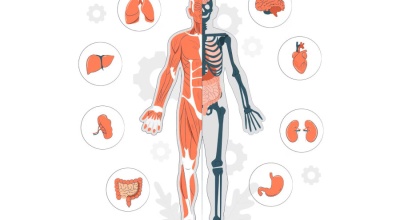Educational activity sheets, shopping guidelines, and videos on safe handling of raw produce and fresh-squeezed fruit and vegetable juices. Learn facts about washing fruits and vegetables under running water, even if they will be peeled or cut. Also, cut off bruised or damaged areas.
Selecting and Serving Produce Safely
Fruits and vegetables are an important part of a healthy diet. Your local markets carry an amazing variety of fresh fruits and vegetables that are both nutritious and delicious. However, harmful bacteria that may be in the soil or water where produce grows can come in contact with fruits and vegetables and contaminate them. Fresh produce may also become contaminated after it is harvested, such as during storage or preparation.
Eating contaminated produce can lead to foodborne illness, often called “food poisoning.” So as you enjoy fresh produce, follow these safe handling tips to help protect you and your family.
Video: Safe Handling of Raw Produce
What You Need to Know About Produce and Juice Safety
Purchasing and Preparing Juice Safe Handling Tips
When Purchasing Juice
- Look for the warning label to avoid the purchase of untreated juices. You can find pasteurized or otherwise treated products in your grocers’ refrigerated sections, frozen food cases, or in non-refrigerated containers, such as juice boxes, bottles, or cans. Untreated juice is most likely to be sold in the refrigerated section of a grocery store.
- Ask if you are unsure if a juice product is treated, especially for juices sold in refrigerated cases in grocery or health food stores, cider mills, or farmers’ markets. Also, do not hesitate to ask if the labeling is unclear or if the juice or cider is sold by the glass.
When Preparing Juice at Home
- Wash your hands for at least 20 seconds with soap and warm water before and after preparation.
- Cut away any damaged or bruised areas on fresh fruits and vegetables. Throw away any produce that looks rotten.
- Wash all produce thoroughly under running water before cutting or cooking, including produce grown at home or bought from a grocery store or farmers’ market. Washing fruits and vegetables with soap, detergent, or commercial produce wash is not recommended.
- Scrub firm produce, such as melons and cucumbers, with a clean produce brush. Even if you plan to peel the produce before juicing it, wash it first so dirt and bacteria are not transferred from the surface when peeling or cutting into it.
- After washing, dry produce with a clean cloth towel or paper towel to further reduce bacteria that may be present on the surface.
Purchasing Fresh Produce and Proper Storage Tips
Buy Right
You can help keep produce safe by making wise buying decisions.
- Choose fresh produce that is not bruised or damaged.
- When buying pre-cut, bagged or packaged produce — such as half of a watermelon or bagged salad greens — choose only those items that are refrigerated or surrounded by ice.
- Bag fresh fruits and vegetables separately from raw meat, poultry, and seafood when packing them to take home from the market
Store Properly
Proper storage of fresh produce can affect both quality and safety.
- Store perishable fresh fruits and vegetables (like strawberries, lettuce, herbs, and mushrooms) in a clean refrigerator at a temperature of 40° F or below. Use a refrigerator thermometer to check! If you are not sure whether an item should be refrigerated to keep its quality, ask your grocer.
- Refrigerate all produce that is purchased pre-cut or packaged.
Separate and Prepare Safely Fresh Produce Tips
Separate for Safety
Keep fruits and vegetables that will be eaten raw separate from raw meat, poultry, and seafood — and from kitchen utensils used for those products.
- Wash cutting boards, dishes, utensils, and countertops with soap and hot water between preparing raw meat, poultry, and seafood and preparing produce that will not be cooked.
- If possible, use one cutting board for fresh produce and a separate one for raw meat, poultry, and seafood.
- If you use plastic or other non-porous cutting boards, run them through the dishwasher after use
Prepare Safely
When preparing any fresh produce, begin with clean hands. Wash your hands for at least 20-seconds with soap and warm water before and after preparation.
- Cut away any damaged or bruised areas on fresh fruits and vegetables before preparing and/or eating. Throw away any produce that looks rotten.
- Wash all produce thoroughly under running water before preparing and/or eating, including produce grown at home or bought from a grocery store or farmers’ market. Washing fruits and vegetables with soap, detergent, or commercial produce wash is not recommended.
- Even if you do not plan to eat the skin, it is still important to wash produce first so dirt and bacteria are not transferred from the surface when peeling or cutting produce.
- Scrub firm produce, such as melons and cucumbers, with a clean produce brush.
- After washing, dry produce with a clean cloth towel or paper towel to further reduce bacteria that may be present on the surface
What About Pre-Washed Produce?
Many pre-cut, bagged, or packaged produce items are pre-washed and ready-to-eat. If so, it will be stated on the packaging, and you can use the produce without further washing.
If you choose to wash produce marked as “pre-washed” or “ready-to-eat,” be sure that it does not come in contact with unclean surfaces or utensils. This will help to avoid cross contamination.
Sprouts: What You Should Know
Like any fresh produce that is consumed raw or lightly cooked, sprouts that are served on salads, wraps, sandwiches, and in some Asian food may contain bacteria that can cause foodborne illness. But unlike other fresh produce, sprouts are grown from seeds and beans under warm and humid conditions. These conditions are also ideal for the growth of bacteria, including Salmonella, Listeria, and E. coli. If just a few harmful bacteria are present in or on the seed, the bacteria can grow to elevated levels during sprouting, even if you are growing your own sprouts under sanitary conditions at home.
Children, older adults, pregnant women, and people with weakened immune systems (such as transplant patients and individuals with HIV/AIDS, cancer, and diabetes) should avoid eating raw or lightly cooked sprouts of any kind (including onion, alfalfa, clover, radish, and mung bean sprouts). When eating out, you can ask that raw sprouts not to be added to your food. If you purchase a sandwich or salad at a restaurant or delicatessen, check to make sure that raw sprouts have not been added.
What can consumers do to reduce the risk of illness if they want to eat sprouts?
- Wash sprouts thoroughly under running water before eating or cooking. Washing may reduce bacteria that may be present, but it will not eliminate it.
- Cook sprouts thoroughly. Cooking kills harmful bacteria and reduces the risk of illness.
Information and Resources
Download Food Handling Fact Sheets
Download a quick overview for staying healthy and free from food poisoning when getting takeout, delivery or dining out. A reference guide of invaluable information on meal prep, shopping, and storage lists of DOS and DON’TS food safety from the grocery cart to the refrigerator
FoodSafety.gov Charts: Food Safety at a Glance
How long can you store leftovers in the refrigerator? How can you tell when chicken breasts are done? How long does it take to cook a turkey? Check out these charts for fast answers.
Storing Food Charts
Storing Food
Whether putting food in the refrigerator, the freezer, or the cupboard, you have plenty of opportunities to prevent foodborne illnesses.
Preparing and Cooking Food Charts
Preparing and Cooking Food
One of the basics of food safety is cooking food to its proper temperature. Foods are properly cooked when they are heated for a long enough time and at a high enough temperature to kill the harmful bacteria that cause foodborne illness.
FoodSafety.gov: FoodKeeper App
The FoodKeeper helps you understand food and beverages storage. It will help you maximize the freshness and quality of items. By doing so you will be able to keep items fresh longer than if they were not stored properly. It is also available as a mobile application for devices, Android and Apple.
Public Downloads
All items are free to view, share, and download.
Public Downloads - Español (Spanish)
When available, we provide all our content with a Spanish version in our public download section. You can find additional material from sources listed in all our articles.
Download Food Safety Activities, Coloring Sheets, Infographics and Videos
Food Safety Educational Downloads
Download Food Safety Activities
Download Food Safety Activity Sheets
Download Food Safety Coloring Sheets
Download Food Safety Videos
Download Food Safety Educational Infographics
Download Handwashing Activities, Worksheets, Posters and Videos
Handwashing Educational Downloads
Download Handwashing Activities
Download Scrub Club Activity Worksheets
Download Handwashing Educational Posters














